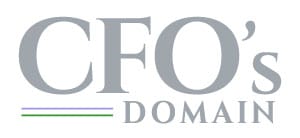Markets love stability. Markets reward companies that find long term stability with higher stock prices. However, these stable businesses tend to get stale over time and lose their ability to adapt to current market forces. Consider former powerhouses like Blockbuster Video, IBM, JCPenney, and Kodak. These companies once dominated their industries. They fell from grace when they lost the ability to adapt.
Additionally, volatility is an ever increasing factor in business continuity and survival. The key to survival is preparing for the unknown. One of the ways to do this is to focus on designing agility into your business.
Agile businesses can accept, adapt, and adjust to changes in market forces, economic climate, and regulatory requirements. Companies that can adapt are also more likely to stay competitive and take advantage of new opportunities when they arise.
The Keys to Agility
How can you design agility into your business? Here are five key behaviors:
1.Empower your People
Most businesses are built like a pyramid, with the power concentrated in just a few people at the top. When employees must ask permission before taking action, necessary changes can be delayed until it’s too late. Instead, give teams and individuals more latitude to take initiative and make decisions. Evaluate the decisions you have to make and whether some of your employees can make those decisions alternatively. Provide them guidance for how they should be thinking through a problem and arriving to a decision.
2.Do Not Plan too Far in Advance
Allocating fixed resources to an implementation plan that could change direction based on any number of early inputs or variables is often not a good use of the organization’s time. Allow for flexibility by planning in short sprints until you have reached the next inflection point. Consider a rolling plan for resource allocation while taking the longer term vision into account.
3.Seek out Vendor Optionality
When negotiating agreements with vendors, value the flexibility of month to month or pay as you go arrangements over long term commitments. The circumstances that you used to underwrite a fixed commitment can change quickly. It may be reasonable at times to pay more to mitigate risk for that flexibility. By way of example, fixed multi-year office leases in today’s environment are detrimental to the changes we have all experienced recently.
4.Lean into Technology
If we want to be more agile, we need more automation to reduce the mundane tasks that rob us of the time spent doing more valuable work. Within the corporate accounting function for example, Robotics Process Automation and Machine Learning are technologies being utilized and tested to streamline accounting processes. With respect to reporting and planning, easy to use and consumable technology stacks with Tableau based dashboards allows the executives to implement rapid decision making.
5.Create an Agile Culture
In every business, the leadership sets the tone. What is the culture like in your business? Consider adopting philosophies such as “think big, but start small” or “speed over perfection”. Then understand how your current frameworks may need to be adapted to align more closely with those philosophies.
Agility is the key to success for most companies. As the business world becomes more volatile and subject to geo-political changes, technology deflation, natural disasters, and health pandemics, it is becoming increasingly more important to design agility into your business.


